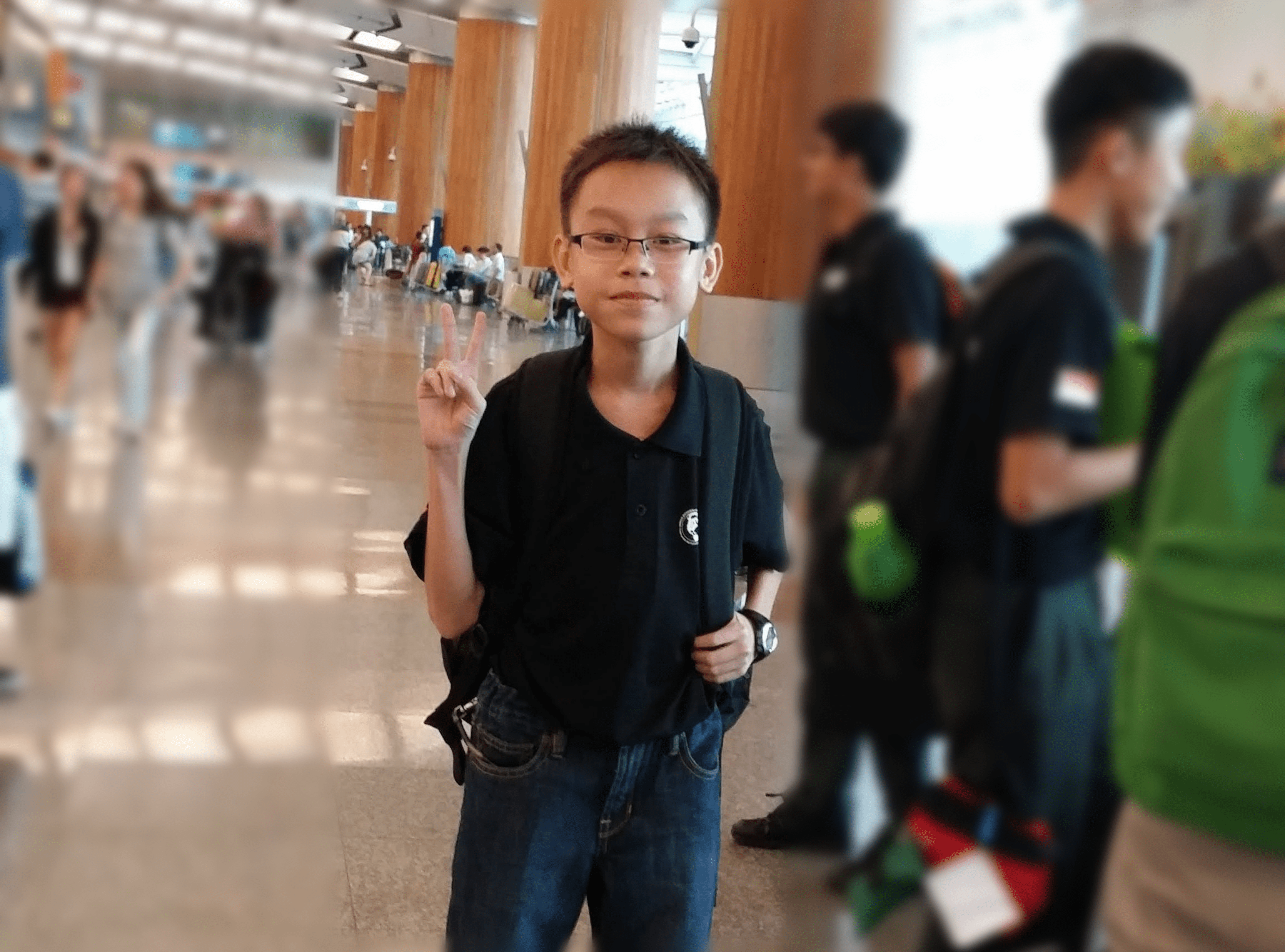I was tasked to identify a problem situation related to the theme - “Maintenance” for which I am required to design a product that can solve the problem. From February 2015 - September 2015, I worked on my project titled “Birdie Repulzer”, which was part of the grading criteria for the Singapore-Cambridge GCE Ordinary Level Examination 2015.
Background
In a typical hawker centre situation in Singapore, pest birds can be seen flocking to the table in a cluttered manner, feasting on the leftover food. This may be the result of the cleaners taking a longer time to clear up the food as most of them are the elderly, hence taking a longer time for the condition of the table to return to its original state. As such, it creates the opportunity of inviting the pest birds over to feed on the leftovers. The upkeep of hygiene poses a problem to the customers as the sight is not appealing and brings about a negative image of the maintenance of cleanliness in the hawker centre. In addition, customers who bring their food over to the table may not be able to find their food as hygienic as it might end up being contaminated with germs and bacteria. Hence, there is a strong need for preventive maintenance to keep the pests birds away.
Goal
Based on the problem that I have identified, I felt a need to design and make an artefact that can keep pests birds away through preventive maintenance in order to maintain a clean and hygienic environment.
Research
Before working on the design, I researched on the potential users and existing products in the market so that I can invent something that best fits the needs of the consumers. This involved coming up with a list of questions to assess the target age of consumers, requirements and dimensions, specific needs for maintenance of cleanliness, etc. via user interviews. Adding onto the user interviews, I found out that there were more than 10 products in the market that already fulfill a similar purpose of being able to keep pest birds away. Such products include “Pestrol Bird Away”, “Terror Eyes”, “Bird Banger”, “Super QuadBlaster QB-4”, and D.I.Y reflective tapes or reflectors, etc.
With these, I had to ask myself:
- To what extent does the situation of pest birds in hawker centres satisfy to meet the critical needs of “maintenance”?
- What kind of social implications does the problem situation have on the environment?
- Are there any health and safety standards that the situation must comply with?
- How different are the end users in the problem situation is, compared to the ones served by the existing products?
- Why is it worthy to pursue this problem situation?
The answers were affirmative; there was a physical need to maintain a good hygiene and cleanliness, in which the utensils need to be kept away and pest birds must be discouraged from feeding leftover food. In return, other diners would feel happy and pleasant while lunching as they have a social space and condition to interact and dine together comfortably.
With the above considerations in mind, I established a consolidated list of design specifications that included the visual appeal, additional functions such as menu and bell system, and easy-disassembly requirement, etc. There were also image and mood boards that I needed to generate and communicate an understanding of the diners at hawker centres, as well as the visual themes that best fit the placement of the product.
Process
After completing the research, the design process kickstarted with idea generation (or ideation).

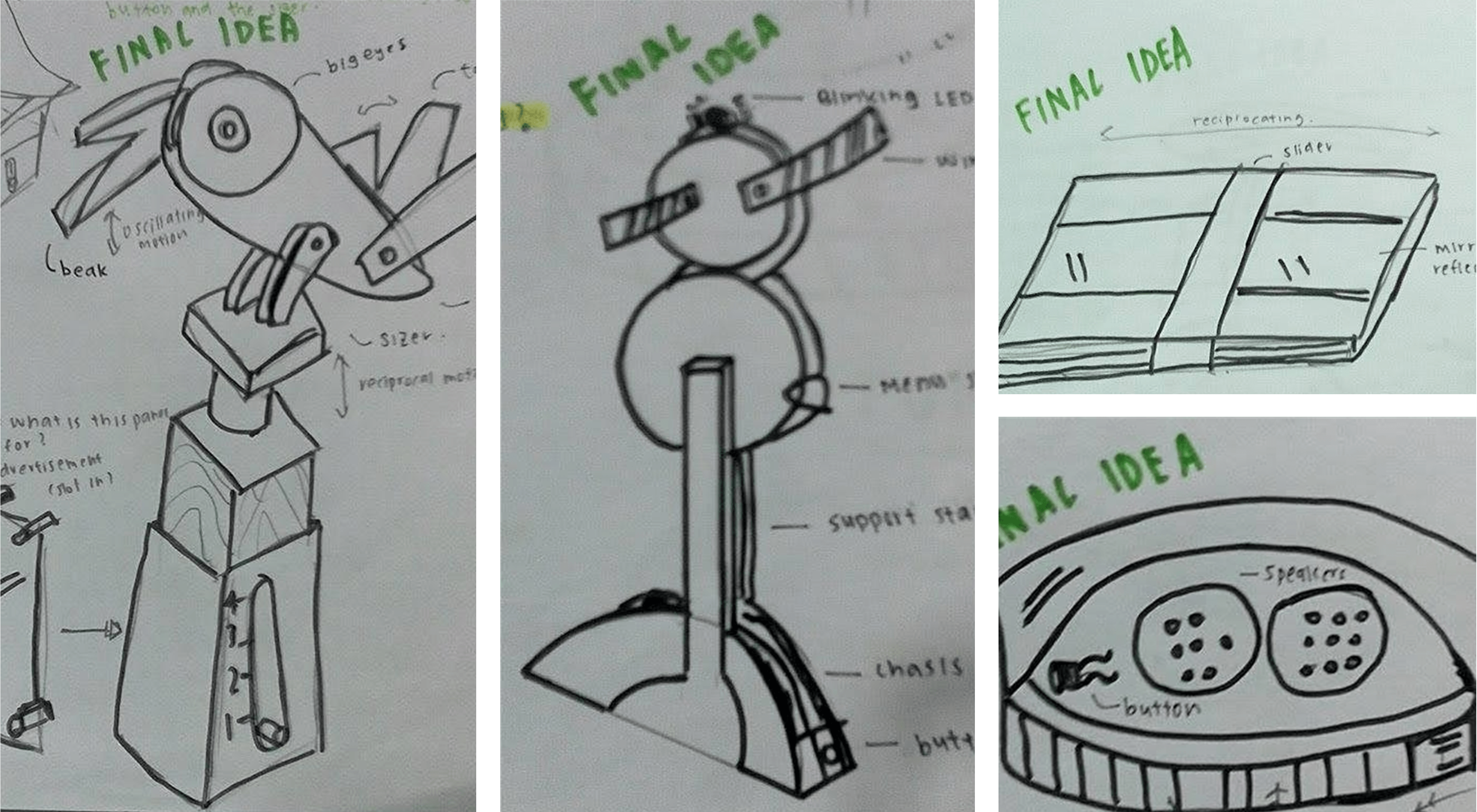
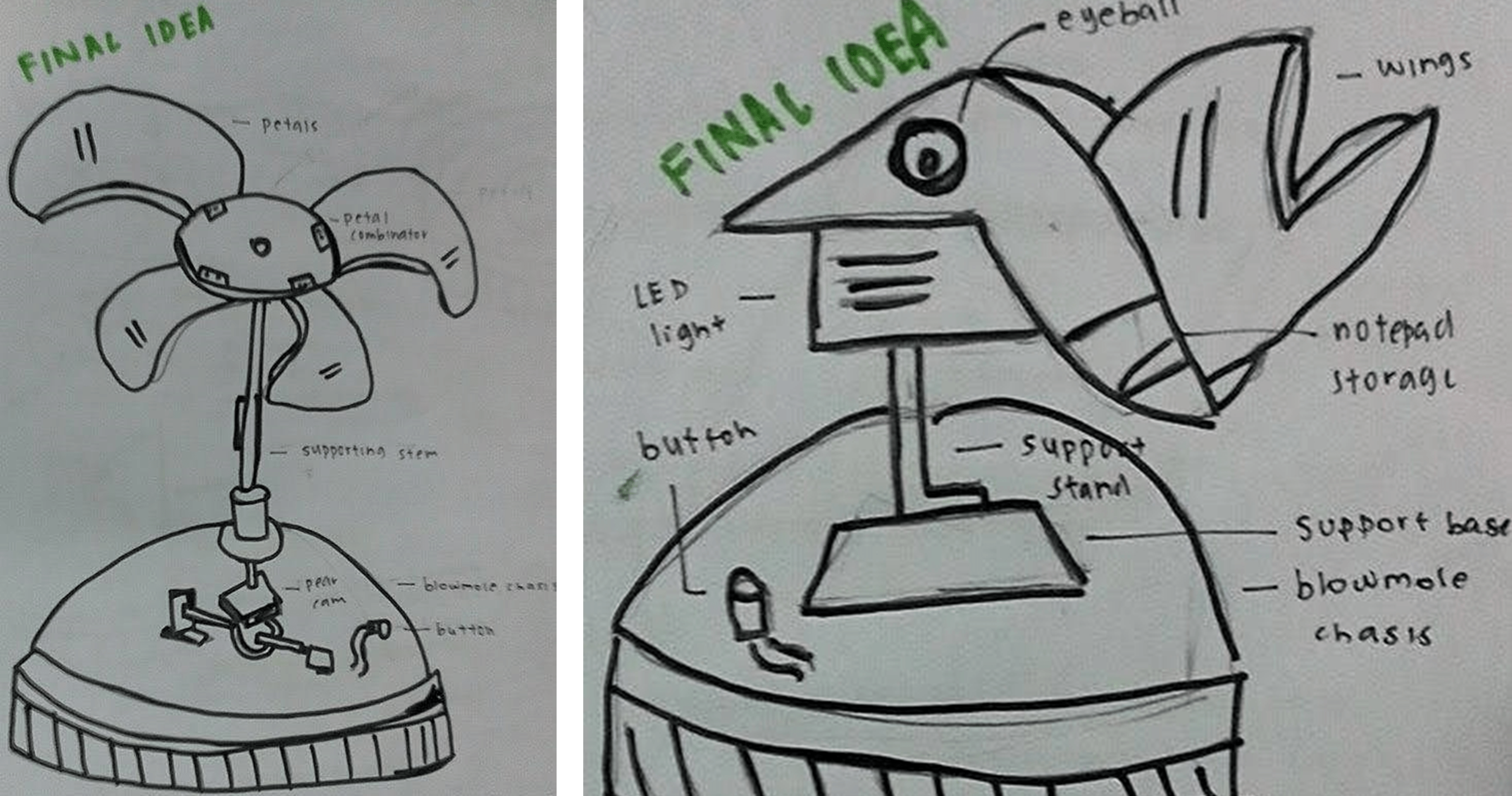
There were 10 different ideas that I came up with, each serving a different purpose such as flapping of crow’s wings, spinning fans and activation of lighting and sound effects. Moving on, with the help of a P.M.I table, I chose the idea shown in the featured cover of this post as the flapping of crow’s wings can illustrate an illusion that a crow is actually present. However, I had to research on a possible mechanism that can simulate the flapping of wings. Here, I arrived at detailed development so as to study the shapes and forms, structures and mechanisms of the artefact.
Firstly, I trialed a moving wings linkage which can be used to make moving pictures and shadow puppets. There is a pivot in the middle to hold the two flaps and the brackets at the side can facilitate to push the flaps upwards or downwards.

However, I also explored a cam and follower which work with push rods, resembling a “flying machine”. Rods of different lengths can change the wideness of the oscillating movement. Similarly, the shape of the rotating shaft and cam can affect the height of the flaps.
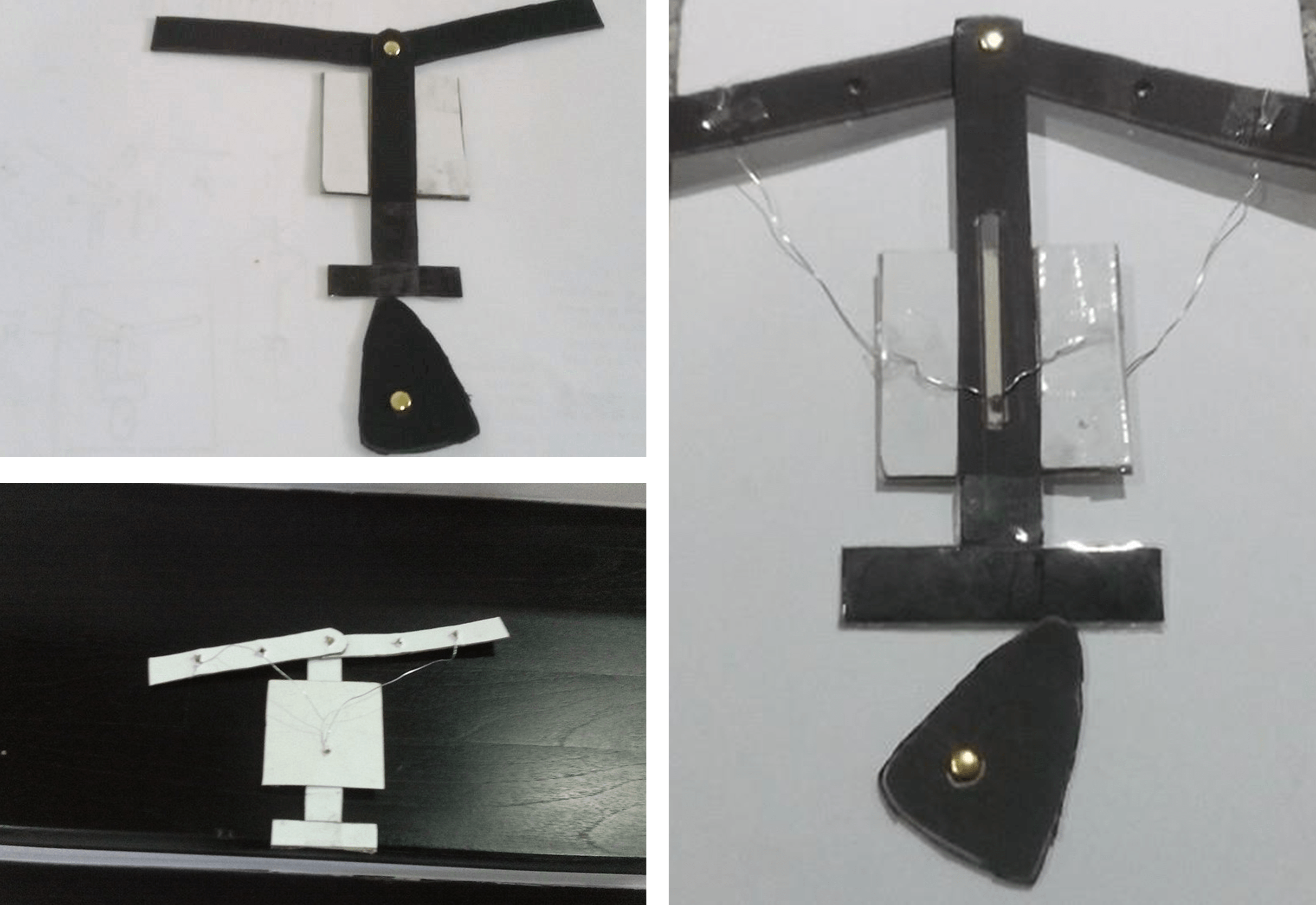
Another important aspect of this idea was to have a sturdy bird hulk to hide the cam and follower mechanism inside, as well as the need for a rectangular storage below the bird to store the parts for the oscillating motor. Using Tinkercad by Autodesk, I dived into the interior of the project and introduced enhancements such as a menu holder.
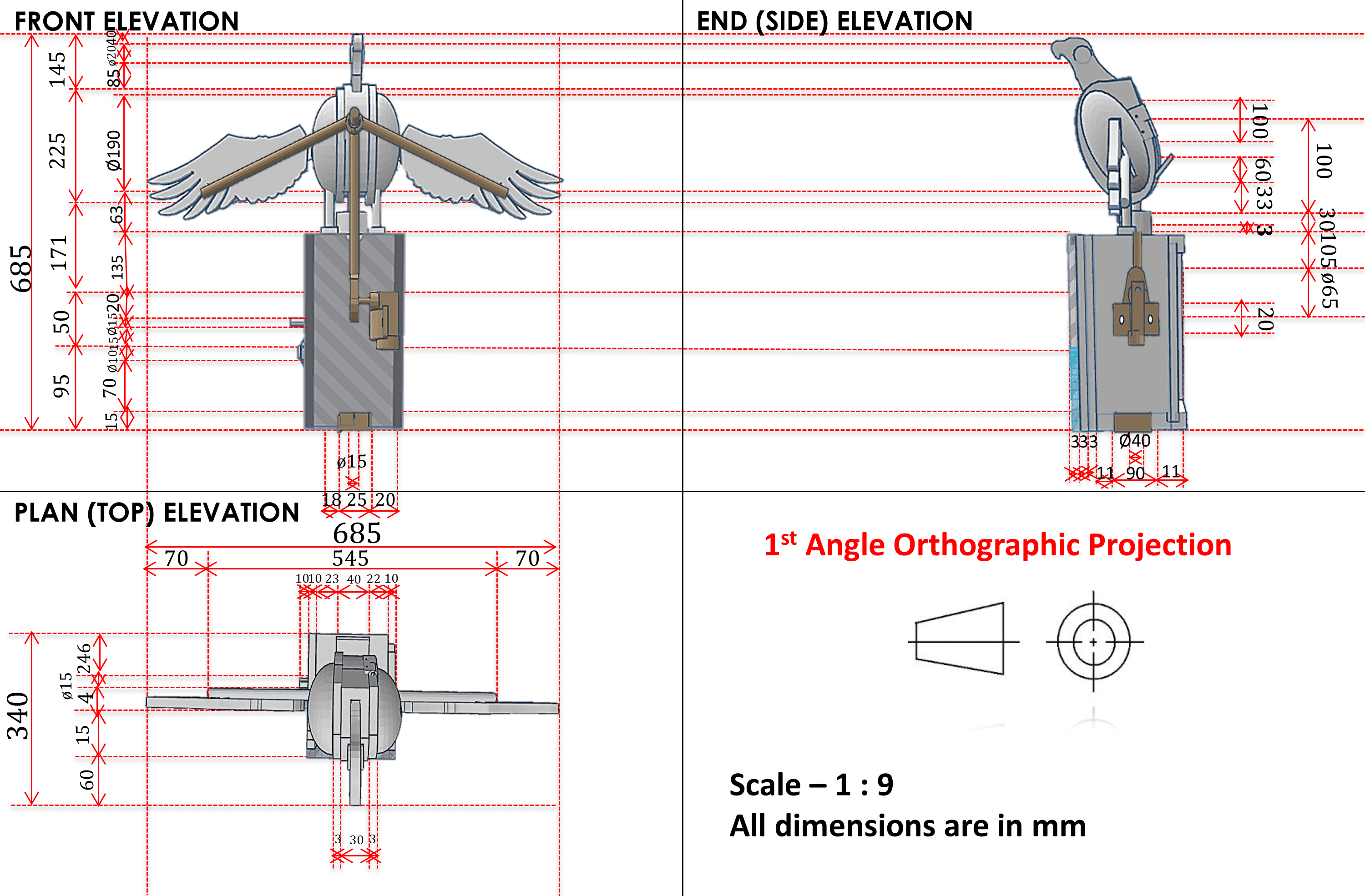
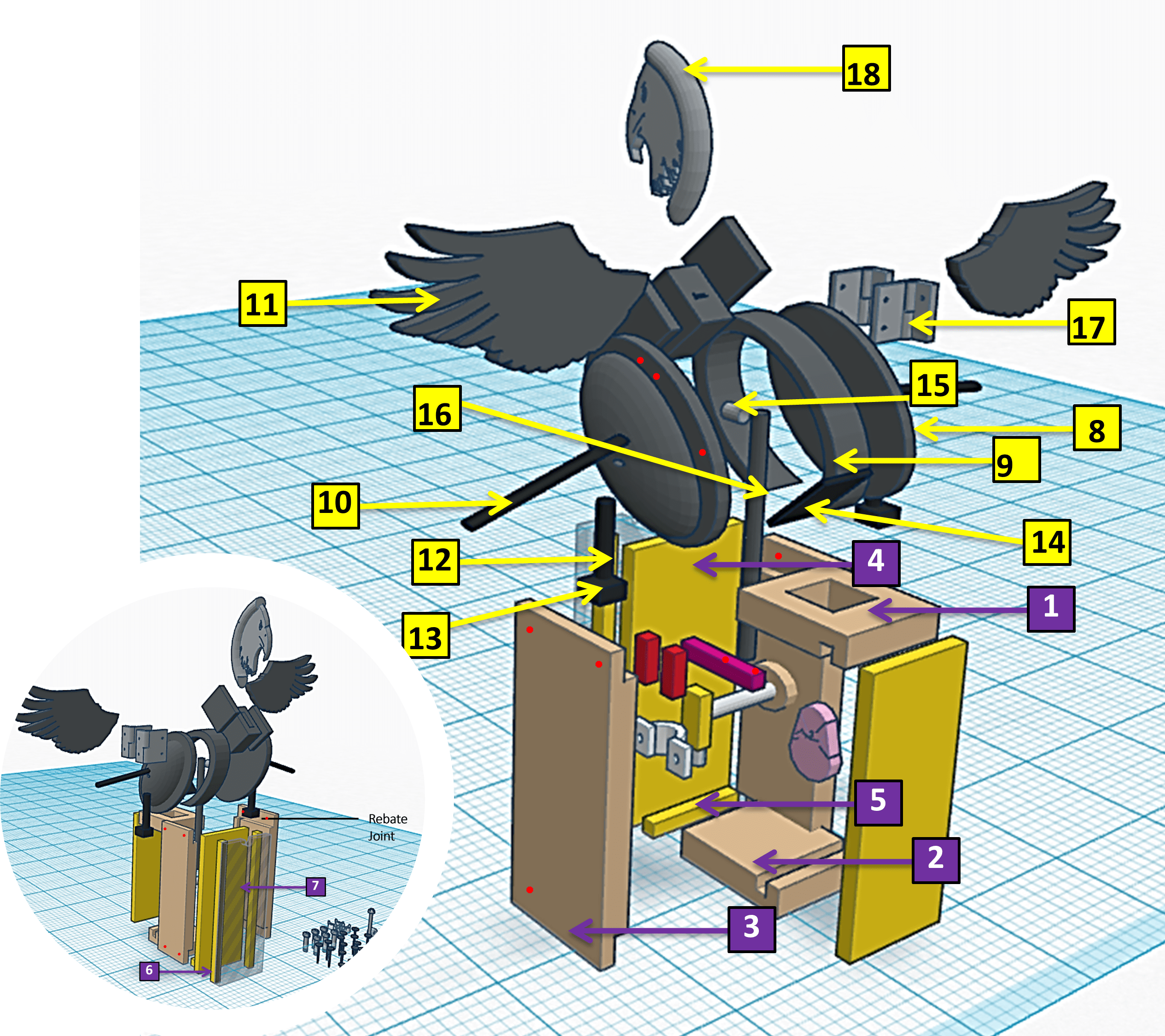
After working out the measurements of the product, I began on the construction process. The motor is connected to the shaft tube and shaft, following the insert of the cam.
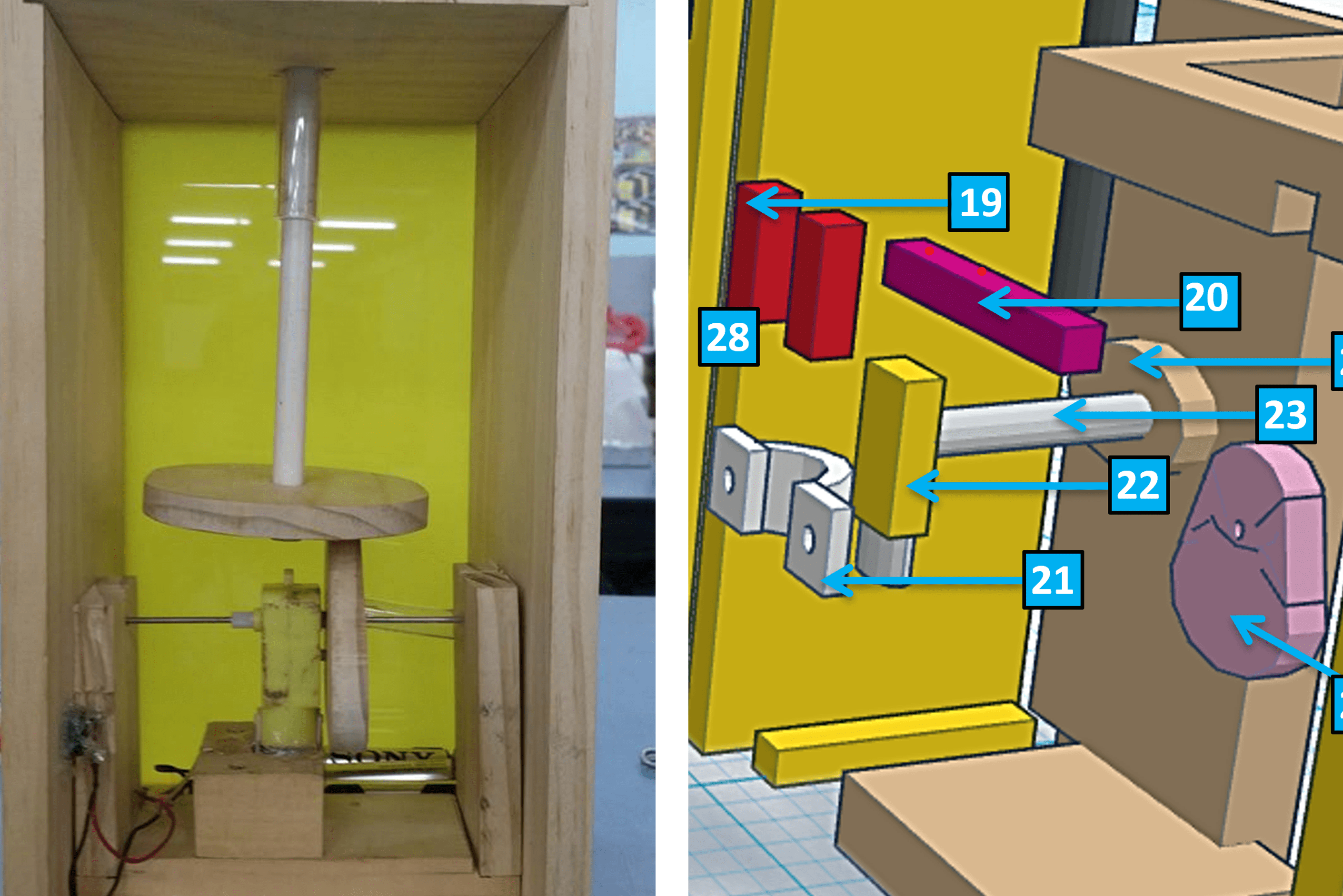

The above figure illustrates the how the mechanism works on the actual product. However, I made several modifications during the construction process when encountering issues such as the battery power not enough to power the moving wings as well as unexpected jams in the cam movement.
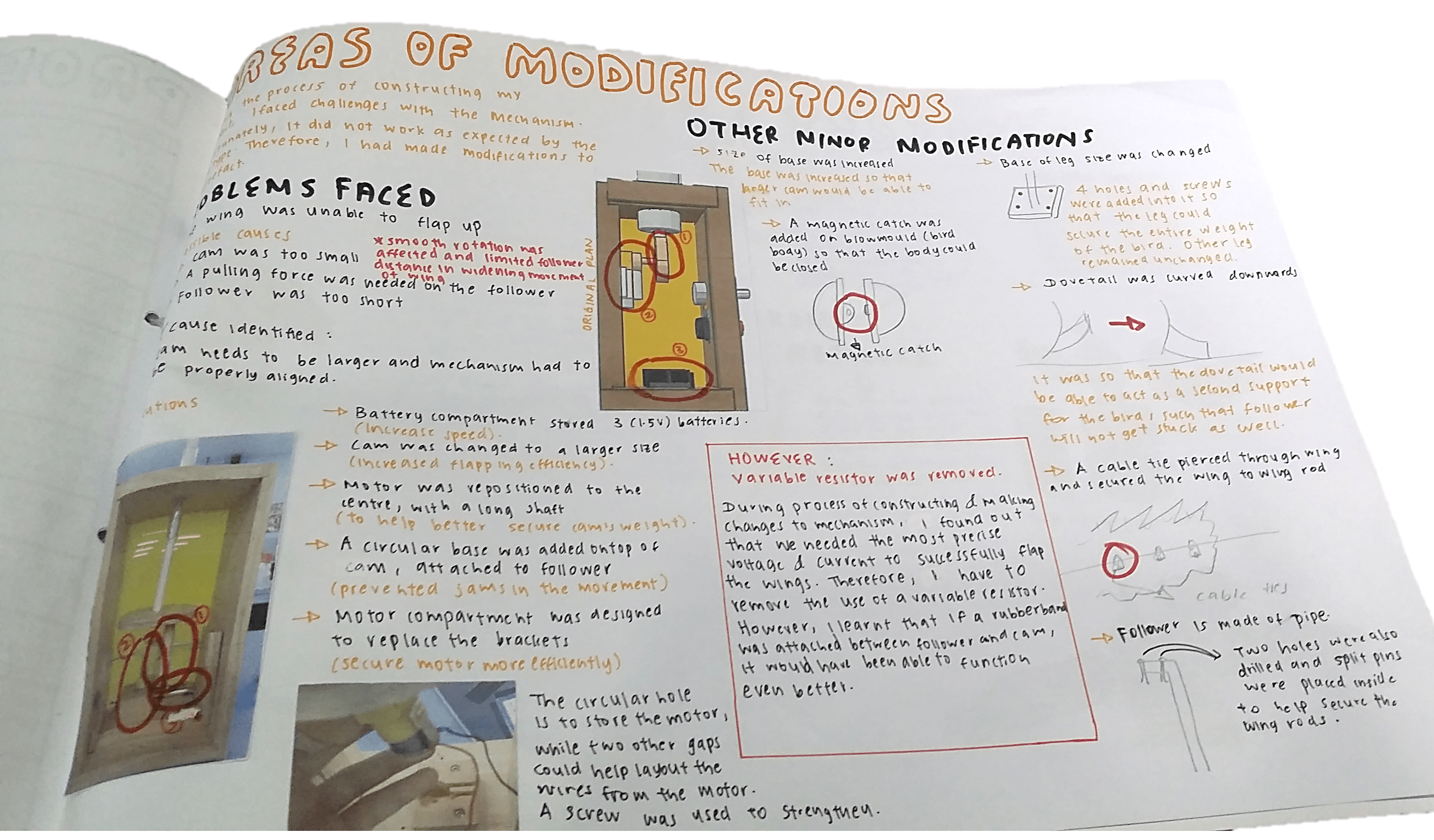
Thankfully, these modifications did not affect my production schedule as I made use of project management techniques to keep track of my progress and frequently evaluated the design specifications to decide which are of priority. Along the way, several unessential design specifications were removed to improve the product’s quality and appeal.


Outcome
This project was a test of my resilience and patience from the start to end, as I had to persevere through multiple stages as ideation, detailed development, construction, evaluation and testing. Prior selection of the materials for the final product and the trial testing of the working mechanisms were important to minimize the barriers that will be faced during construction. I received wonderful feedback about the uniqueness of the product due to the attention-seeking bird model.

I attained a Top in Cohort for Design and Technology in 2015, and it would not have been possible if not for my teacher’s constant guidance and advice.



